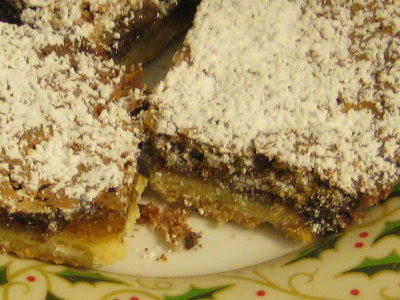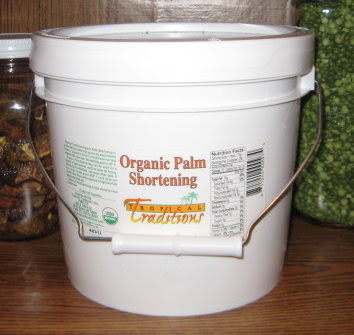Random updates, follow-ups, ideas, and observations since my last
"Around The Homestead".
4 The woodstove is doing a fairly good job of heating most of the house (approximately 1500 sq. ft). The kitchen warms up with cooking, but remains cool if not chilly otherwise.
The addition can be downright cold, so we've taken to leaving the door to it shut. This makes it perfect for cold storage, and also helps keep the kitchen warmer. We use a space heater to heat up the bathroom back there for showers.
4 I've also started shutting the doors to my studio at night. It takes it awhile to heat up in the morning, but this definitely contributes to keeping the house warmer all night. Fortunately my studio has a lot of windows which get the morning sun, which help warm it up on a sunny day.
4 We haven't had a lot of sunny days. What we have had has been almost 12 inches of rain over the past 6 weeks. Our daytime highs are usually in the 40s, lows in the 20s unless it rains overnight, then the lows stay in the 30s. So, no solar warmth in the studio. I do use the space heater in here if I'm working at the computer for any length of time.
4 I am wondering if this is the reason my computer monitor is acting up. It doesn't want to work when I first boot up the computer, nor if it's been sitting dormant for awhile during the day. It either flashes or goes dark. Eventually it warms up and behaves. It's only a couple of years old, so I'm hoping it's the cold that is causing the problem.
4 Thanks in part to the cold weather, we've come up with a new plan for
the addition. We are considering making Dan's office a food storage, and giving him some space in a master suite we're planning. His new office space would be borrowed from our 5-foot wide
hallway, which would mean walling the back portion of the hall off (which would mean I'd have to do something with the linen closet). We would use the
spare room for our bedroom, the hall bath would become the master bath, and that would make him a happy camper. I've been meaning to blog about those plans, but just haven't gotten around to it yet!
4 Dan put up two birdbaths in the
area I cleared right outside our kitchen window. One of them he made with cement leftover from
the woodstove alcove (photo of his creation
here). I added two bird feeders and a suet feeder. We get tons of birds! Spotted so far:
- American robins
- cardinals
- cedar waxwings
- Carolina chickadees
- white breasted nuthatches
- Carolina wrens
- mourning doves
- blue jays
- white throated sparrows
- common grackles
- rufous sided towhees
- tufted titmice
- blue birds
- mockingbirds
- downy woodpeckers
- red-bellied woodpeckers
- purple finches
- brown thrashers
- yellow rumped warblers
- house finches
- and an unidentified sparrow.
4 We also have red-shouldered hawks and red-tailed hawks which circle overhead frequently, though they've never visited our feeders (fortunately for the birds who do). DH did see one try to pick a squirrel out of a tree in the back yard.
4 We have lots of squirrels. Lots of fat squirrels. And chipmunks.
4 I was walking in the woods the other day and came upon a red shouldered hawk feeding. I had my camera in my pocket and hoped to sneak the camera out to get a picture. It was so busy that at it didn't notice me at first, but that didn't last long. It flew off before I could get the camera out. It was eating what looked like the remains of a grackle, but all that was left was a pile of black feathers. This explains the piles of feathers I find around the place from time to time.
4 I've been reading about small scale grain growing and wondering how feasible it would be for us to try that next year. Corn sounds especially do-able on a small scale by hand.
4 Speaking of grain, I'm pleased to tell you that we're making progress on the
goat fence! We are currently working on corner bracing.
4 I have decided to wait on getting Shetland sheep. The reason? A gal in my
weavers' guild has Shetlands and I've learned a lot chatting with her. My problem at the moment is the large number of blackberry and wild rose bushes in the area we're fencing. She told me I'd be forever having to rescue them from getting caught in the thorns, especially as their fleece grew out. So. Goats first. Sheep later. :(
4 And speaking of goats and squirrels, DH discovered a pair of flying squirrels in the goat shed, making cozy during the cold weather. He was just as surprised to see them as they were to see him.
Rascal knew they were there though, and now we know why he was meowing at the shed ceiling when we were working on the fence the other day.
4 We finished up the last of the
electrical re-wiring projects. The
overhead lights inside the house have been finished for awhile, but we still needed a light in the enclosed back porch/ laundry room/
summer kitchen, and a light outside the back door. Both are done and very welcome now that the sun goes down so early.
4 Besides the
fruit and
almond trees, we planted two more
Leyland Cypresses, which finishes out the row along the field.
4 This week we plan to sand the
dining room floor. We'd hoped to have it all done by now, but between Dan's work schedule and needing to plant all the new trees, we are just now getting to it.
4 Consequently I have no Christmas decorations up. One reason is because my china hutch won't be available for my
Christmas Village until I can finally put it in the dining room. The other reason is because we've decided to do the dining and
living room floors at the same time, so, no Christmas tree. Yes, doing both rooms together makes a bigger job, but I'm afraid our momentum and enthusiasm will fade away if we try to make these two separate projects.
4 Indoor painting projects include the living room ceiling, walls, etc, and trim and doors in the bedroom. Photos one of these days.
4 Outdoor
sanding and priming of the siding isn't making much progress with all the rain. I have finished the front of the house though, so at least our house doesn't look like the neighborhood eyesore anymore.
4 I have found a good source for local, pasture raised, grass fed meats from animals given no hormones nor antibiotics. I can buy combination boxes of beef, pork, and chicken, delivered right to my door. Buying in bulk like this is more economical than buying individual packages of similar meats from the grocery or health food stores, and makes me very glad I invested in a chest freezer earlier this year.
4 I've decided not to give my
Rose Hip Jelly for Christmas gifts after all. It appears to have a, well, an, er, um, *ahem* "medicinal" effect. Perfect for constipation, but not for toast!
4 Some days everything seems quite overwhelming. There's so much to do; much more than our dwindling savings can accomplish. We are careful to budget and prioritize, but the more we get to know our old house, the more its needs become apparent. If I dwell on it all too long I get discouraged and question whether or not this place and this lifestyle are really the best choice for us. I wonder if we've bitten off more than we can chew.
At times like that I consider the alternatives. I remember how I felt during those 3 and 1/2 years of apartment dwelling before we found this place: I was frustrated with our indoor lifestyle and restless like a caged animal. If it hadn't been for my
fiber arts, I think I would have gone into a tail spin. That reminds me to take stock of all the blessings we have living here. I also remember that there are freedoms to a self-sustaining lifestyle that make all the work worth it.
Around The Homestead is copyright December 2009 by
Leigh at
http://my5acredream.blogspot.com/















































